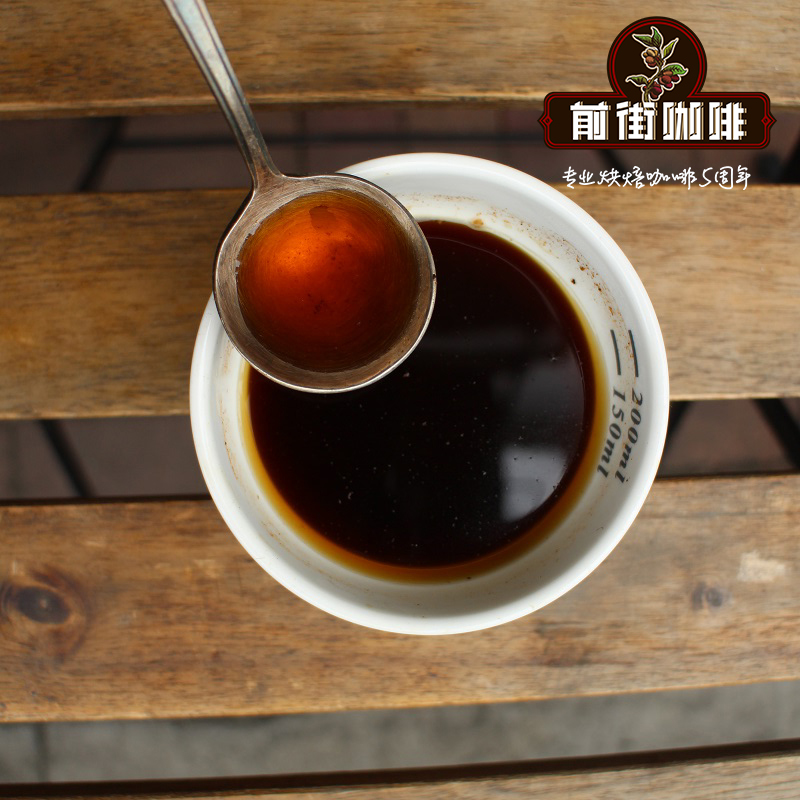Flavor characteristics of Honduran Coffee
Maybe you've heard of the Honduran Blue Hole.
And the famous Mayan civilization.
But for the fragrance of Honduran coffee
You may feel strange.
Today, let's meet Honduran Coffee.
When it comes to coffee in Central America, you may immediately think of coffee producers such as Guatemala, Costa Rica and Panama. But El Salvador, Nicaragua and Honduras are also big coffee producers in Central America. As for coffee from El Salvador and Nicaragua, we have talked about it in previous issues.
Honduran coffee, most people will feel very strange. Is there coffee in Honduras? In my impression, this is one of the most restless countries in China and the United States, and the current political situation is still very unstable. The only thing that can be connected with it is the world-famous diving resort, the Honduran Blue Cave.
Coffee? Will there be coffee production in such a chaotic country? Yes, indeed, Honduras produces coffee, and the output of coffee is still very high, and the quality of coffee is also quite good! Although it is now a backward and chaotic country, this small Central American country is also a region of Mayan civilization, with many relics of Mayan civilization and beautiful tropical seaside scenery. If it were not for such a turbulent situation, it would certainly become a tourist destination; if it were not for such a turbulent situation, the coffee here would be even better. In our previous sharing class, we have always mentioned the capital of Honduras, which is also in the best coffee production belt. But now the coffee industry in Honduras is quietly showing its edge, and its coffee beans have reached the level of boutique coffee. And this time let's take a look at Honduran coffee in the face of turmoil.
General situation of growth geography
Honduras is a mountainous country in Central and North America, with a population of more than 8.3 million and an area of about 112000 square kilometers. Located in the north of Central America. It is bordered by the Caribbean Sea to the north, the Gulf of Fonseca in the Pacific Ocean to the south, Nicaragua and El Salvador to the east and south, and Guatemala to the west. More than 3/4 of the territory are mountains and plateaus. Mountains extend from west to east, inland for lava plateaus, multi-mountain valleys, coastal plains. Tropical climate, coastal plain belongs to tropical rain forest climate. With mild temperature and abundant rainfall, Honduras is now one of the top ten coffee exporters in the world, ranking second in terms of coffee exports in China and the United States (second only to Guatemala).
With regard to the production of coffee, the geographical conditions of Honduras are no less than those of its neighboring coffee-producing countries such as Guatemala and Nicaragua. Honduras has all the natural environment for producing the most advanced and fine coffee, fertile soil, suitable altitude and suitable climate. The coffee produced in Markara region enjoys a high reputation in the international market for its excellent taste and quality, and its acidity is low. Unique sweetness of caramel. Like other places, the coffee grade in Honduras depends on altitude: coffee grown at 700 to 1000 meters above sea level is medium, coffee grown at 1000 to 1500 meters above sea level is the best, and coffee at 1500 to 2000 meters above sea level is the highest level of "selected highland coffee", most of which is exported to the United States and Germany.
Picking and handling mode
In the coffee garden, because the planting area belongs to the mountain area, people pick coffee beans by hand, and then process them carefully in order to produce better quality coffee beans. Honduras collects 3 million bags of coffee every year, providing you with a variety of coffee products. Most coffee farms are environmentally friendly. The coconut shell on the ground is a natural water storage device. When Rain Water stores too much water, Rain Water can slowly release water when it decreases, thus achieving an organic balance.
The granules of coffee beans in Honduras are large in shape, uniform in size and glossy in color. In order to facilitate harvesting, farmers will prune the coffee trees to no more than 150 centimeters, because if they grow too high, they have to set up ladders to pick, which is not only time-consuming, but also may damage the trees by bending branches. As the ripening period of each fruit of coffee beans is different, in order to maintain the good quality of coffee beans, it is necessary to pick them manually, and then select the ripe red fruits. For coffee fruits of the same branch, it often takes several weeks to pick them all.
And high-quality coffee in Honduras uses water washing to deal with coffee beans, usually after soaking, when soaking, the defective fruit will surface and can be discarded first. Then put the good fruit into the fruit peeling machine and peel off the peel with the rotating force of the machine. Peeled fruits are screened by machines to select fruits of high quality. Usually the bigger the fruit, the better the maturity.
Coffee in Honduras is dried in the sun, so there is always a hint of fruit in the taste. And Honduran coffee can lead to multiple levels of flavor according to the degree of roasting. Moderate baking can maximize the sweetness of beans, while deep baking increases bitterness, but sweetness does not disappear. Generally speaking, medium roasting has the best taste and rich and unique aroma, which is favored by coffee lovers in Honduras.
Flavor characteristics
Honduran coffee does not have a very distinctive feature: the overall rich and well-balanced taste is its greatest feature; in detail, it has medium or shallow acidity, giving the feeling obvious but not strong. Sometimes with beautiful slightly floral or fruity aromas (generally speaking, different producing areas, different elevations of beans have different flavor performance) is not at all reminiscent of the unrest of the country; slightly bitter and obvious sweet. The taste of Honduras is well balanced, with medium and shallow acidity, and neither acid nor bitterness is strong, and the balance between the two is better.
The extremely balanced nature of Honduran coffee makes it a wide range of uses. Can be used to mix coffee, can also be used as a single product to brew, mixed with Honduran coffee Italian concentrate will have a surprising effect. Overall, Honduran coffee has a good reputation and is suitable for mixed coffee.
Of course, coffee in Honduras also faces some problems, which are headaches for all coffee-producing countries. Coffee rust (Rust) is a great harm to coffee in the country, especially in the eastern part of the country, where rust is more serious, and drug sprays used to treat this disease have played an important role in increasing coffee production.
There is also a labor problem. Child labour is still used in many estates in Honduras. On December 20, 2010, female child workers picked coffee beans in El Palaiso province, 120 kilometers east of Tegucigalpa, the capital of Honduras. Child laborers shovel freshly harvested coffee beans at a plantation in El Paraiso province, Honduras, February 4, 2011.
Honduras aims to become the largest exporter of coffee in Central Africa, so there are no restrictions on the employment of child labor in Honduras.

Important Notice :
前街咖啡 FrontStreet Coffee has moved to new addredd:
FrontStreet Coffee Address: 315,Donghua East Road,GuangZhou
Tel:020 38364473
- Prev

Introduction of Yemeni Coffee producing area Haraaz description of taste and aroma of Yemeni coffee beans
For more information on coffee beans, please follow the coffee workshop (Wechat official account cafe_style). In fact, Yemen is located on the Arabian Peninsula of the Asian continent, but it is very close to Africa as long as it crosses the Red Sea and the Gulf of Aden Gulf of Aden. However, other Arab countries do not produce coffee, so people classify Yemeni coffee as North African coffee.
- Next

Guatemala Flower Coffee La Minita La Folie Guatemala Antigua Coffee ppt
Professional coffee knowledge exchange more coffee bean information please follow the coffee workshop (Wechat official account cafe_style) Product name: Guatemala Laminita Flower God (Guatemala La Minita La Folie) production area: Antigua (Antigua) volcanic Mountain Manor: Raminita (La Minita) Export: Laminita (La Minita) Group Brand Flower God
Related
- Does Rose Summer choose Blue, Green or Red? Detailed explanation of Rose Summer Coffee plots and Classification in Panamanian Jade Manor
- What is the difference between the origin, producing area, processing plant, cooperative and manor of coffee beans?
- How fine does the espresso powder fit? how to grind the espresso?
- Sca coffee roasting degree color card coffee roasting degree 8 roasting color values what do you mean?
- The practice of lattes: how to make lattes at home
- Introduction to Indonesian Fine Coffee beans-- Java Coffee producing area of Indonesian Arabica Coffee
- How much will the flavor of light and medium roasted rose summer be expressed? What baking level is rose summer suitable for?
- Introduction to the characteristics of washing, sun-drying or wet-planing coffee commonly used in Mantenin, Indonesia
- Price characteristics of Arabica Coffee Bean Starbucks introduction to Manning Coffee Bean Taste producing area Variety Manor
- What is the authentic Yega flavor? What are the flavor characteristics of the really excellent Yejasuffi coffee beans?

